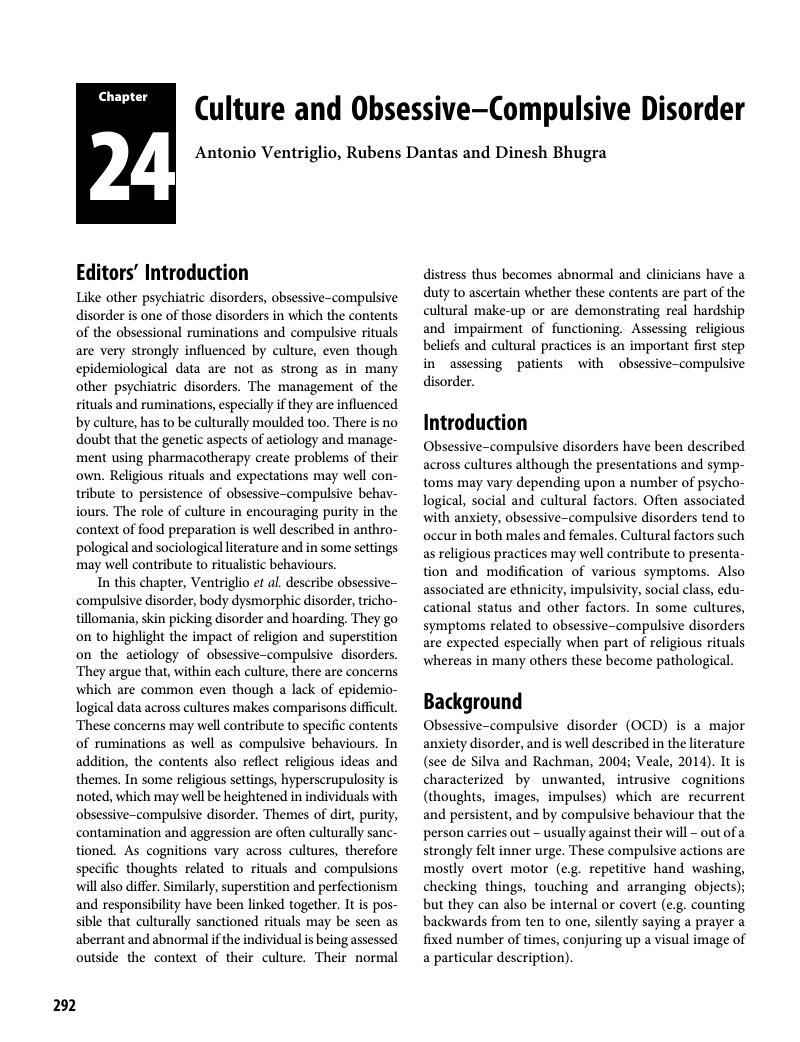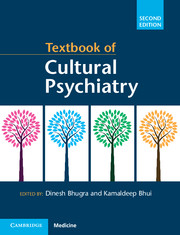Book contents
- Textbook of Cultural Psychiatry
- Textbook of Cultural Psychiatry
- Copyright page
- Dedication
- Contents
- Contributors
- Foreword
- Preface to the Second Edition
- Section 1 Theoretical Background
- Section 2 Culture and Mental Health
- Section 3 Culture and Mental Disorders
- Chapter 18 Neurotic Disorders
- Chapter 19 Schizophrenia and Related Psychoses
- Chapter 20 Affective Disorders Coloured by Culture: Why the Pigment of Depression is More Than Skin Deep
- Chapter 21 Substance Misuse
- Chapter 22 Culture and Mental Disorders: Suicidal Behaviour
- Chapter 23 Personality Disorders and Culture
- Chapter 24 Culture and Obsessive–Compulsive Disorder
- Chapter 25 Culture and Eating Disorders
- Chapter 26 Child and Adolescent Psychiatric Disorders
- Chapter 27 Culture and Schizophrenia
- Chapter 28 Disorders of Ageing across Cultures
- Section 4 Theoretical Aspects of Management
- Section 5 Management with Special Groups
- Section 6 Cultural Research and Training
- Index
- References
Chapter 24 - Culture and Obsessive–Compulsive Disorder
from Section 3 - Culture and Mental Disorders
Published online by Cambridge University Press: 16 March 2018
- Textbook of Cultural Psychiatry
- Textbook of Cultural Psychiatry
- Copyright page
- Dedication
- Contents
- Contributors
- Foreword
- Preface to the Second Edition
- Section 1 Theoretical Background
- Section 2 Culture and Mental Health
- Section 3 Culture and Mental Disorders
- Chapter 18 Neurotic Disorders
- Chapter 19 Schizophrenia and Related Psychoses
- Chapter 20 Affective Disorders Coloured by Culture: Why the Pigment of Depression is More Than Skin Deep
- Chapter 21 Substance Misuse
- Chapter 22 Culture and Mental Disorders: Suicidal Behaviour
- Chapter 23 Personality Disorders and Culture
- Chapter 24 Culture and Obsessive–Compulsive Disorder
- Chapter 25 Culture and Eating Disorders
- Chapter 26 Child and Adolescent Psychiatric Disorders
- Chapter 27 Culture and Schizophrenia
- Chapter 28 Disorders of Ageing across Cultures
- Section 4 Theoretical Aspects of Management
- Section 5 Management with Special Groups
- Section 6 Cultural Research and Training
- Index
- References
Summary

- Type
- Chapter
- Information
- Textbook of Cultural Psychiatry , pp. 292 - 303Publisher: Cambridge University PressPrint publication year: 2018



